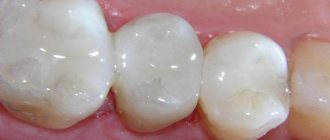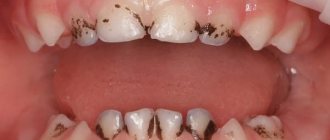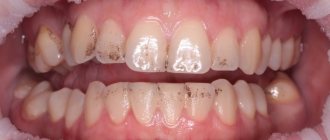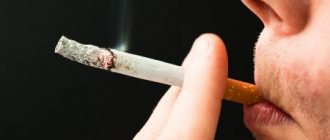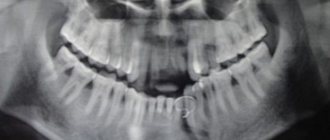Have you had your teeth whitened and your doctor recommends following a white diet? Do you want to know the exact checklist of foods that, according to dentists’ recommendations, should not be consumed on a white diet. What can replace products with coloring pigments? Experts told us about this and much more.
The white diet is a special type of diet in which a person consumes non-coloring foods, that is, without pronounced pigment. The so-called transparent diet is prescribed after teeth whitening. A colorless diet is recommended for patients to consolidate the effect, preserve the resulting color of tooth enamel for as long as possible, and protect from exposure to various substances. Also, a white diet should be followed when whitening at home.
Clinical case with a transparent diet: the patient planned home teeth whitening. I purchased special products from the dentist (mouth guards with gel) and consulted with a dentist. It is recommended to adhere to a colorless diet throughout the entire whitening period (about a week), as well as for another 7–10 days after the end of the course.
Following a colorless diet is important not only for maintaining the effect of the procedure. You should not subject additional tests to tooth enamel, which is somehow weakened after whitening procedures and has a porous structure. In two to three weeks of the white diet, the enamel will be restored, and you will be able to return to your usual lifestyle, but with certain nuances in the pigment content of the products.
How strictly should you follow the white diet?
As much as possible with a diet. For example, in order for the effect to last for a long time, when on a white diet, you should avoid foods with coloring pigments for 2 to 3 weeks after the procedure.
Also, as part of the white diet, experts advise gradually introducing useful habits: partially or completely giving up red wine, coffee or black tea, drinking colored drinks through a straw, replacing the same tea with kefir or milk.
Remember! Pigment substances are not harmful to healthy tooth enamel, but in the presence of inevitable microdamages after bleaching, dyes can penetrate deep into it and stain it.
The most important thing in the white diet is to pay attention to the color of the foods. The diet has no strict restrictions on the quantity or variety of food products.
Dentistry for those who love to smile
+7
Make an appointment
What foods stain teeth?
- Coffee
. Lovers of this drink most often have a yellow or brownish coating on their teeth. This is due to the cocoa butter, heavy carbohydrates and sugars contained in coffee. Instant coffee has a greater effect on dental health than ground coffee.
enamel. You can reduce the effect of coffee on your teeth by diluting it with milk or water. It is also best to limit your coffee intake to one cup per day. - Tea
. Contains tannins and, like coffee, stains teeth a yellowish-brown tint. Tea in bags is most harmful to teeth: due to the artificial components contained in it, which happens very often, it stains teeth more than leaf tea. The type of tea - green or black - does not matter. - Wine
. White wine contains acids that negatively affect tooth enamel, causing microcracks to appear through which coloring substances penetrate deeper. Red wine contains tannins and a burgundy-red tint, which also contributes to tooth staining. - Carbonated drinks
. Not only do they change the color of your teeth, but they can also leach calcium from your teeth. In addition to a huge amount of sugar, they contain malic, citric and other acids that literally “corrode” the enamel. You should especially beware of colored soda - it not only corrodes the enamel, but can also stain the tongue and teeth in poisonous colors. If you decide to drink Coca-Cola, do it through a straw, this will reduce the harmful effects on your teeth. - Juices
. Bright and dark juices, such as pomegranate, cranberry, grapefruit, etc., due to their bright color, can also cause yellowing of teeth. It is healthier to simply eat fruit or drink juice diluted with water. - Vegetables and fruits
. Berries that are rich and dark in color, such as blueberries, blackberries, blueberries, cherries, and cranberries, can cause staining and yellowing of teeth. Among vegetables, beets are a strong dye due to the high content of chromogens in them. To prevent dark plaque from forming on your teeth, it is recommended to brush your teeth immediately after eating beets. - Sauces and seasonings
. Many seasonings that have a yellow or brown tint are also on the list of foods that stain teeth. Due to their bright color and high acid content, tomato-based sauces are harmful to teeth. Also, do not overuse soy sauce. - Chocolate and ice cream
. Chocolate and caramel from their color also lead to darkening of the enamel. As for ice cream, sweet and fruit desserts, they contain artificial food colors and chemical components that lead to microtrauma and staining of teeth.
To avoid staining and maintain the natural color and health of your teeth, we recommend visiting a dentist once every 6 months for professional oral hygiene.
You can make an appointment by phone. 8(863)2098902.
What exactly is not recommended to eat on a white diet? Stop list of products
The white diet excludes the following foods from the diet:
- black and green tea. By the way, it is green tea that causes plaque to form on teeth extremely quickly. This product should also be excluded from the white diet so that your teeth do not darken after whitening;
- bright sauces: tomato, soy, adjika, ketchup, etc.;
- coffee, cocoa are obvious stop drinks of a transparent diet;
- colored fruits: plums, dark grapes, red apples;
- fruit and vegetable juices, compote, fruit drink;
- chocolate, lollipops, dragees;
- citrus;
- jam;
- egg yolk;
- red wine.
Practical advice
If you cannot deny yourself the pleasure of eating your favorite foods, then you will be interested in several practical tips that reduce the risk of developing tooth discoloration:
- Do not drink coffee and tea too hot, do not alternate with cold water. Changes in heat and cold are no less destructive to enamel than the development of plaque.
- Minimize the consumption of bright berries (blackberries, blueberries), replacing them with lighter ones (apples, melons, grapefruits). You should not abuse juices, especially not freshly squeezed ones. Play it safe by rinsing your mouth.
- Be careful when consuming carbonated liquids. If you can't resist sweet carbonated drinks, use a straw. It's simple, effective, and does not harm the enamel.
- Less sugar is the motto of the modern generation. Eliminate candies like toffee and those containing unnatural dyes from your diet. It definitely won't get any worse.
- When consuming sauces and bright spices, we can recommend combining them with broccoli and lettuce, which will minimize the harm caused.
In addition, it is necessary to remember that products that stain teeth should not remain in the oral cavity for a long time. After drinking a drink or product containing pigmented particles, it is advisable to rinse your mouth.
Important! It is not recommended to brush your teeth within half an hour after eating food. During the period of eating food, a low pH (acidic) environment is created in the mouth to activate the enzymes of the digestive system.
The other side of such an environment is the softening of the enamel. Additional mechanical stress can lead to destruction of the enamel.
The video provides additional information about foods that are harmful to teeth.
What happens if you break the rule of the white diet?
Nothing catastrophic, but the effect of teeth whitening will no longer be the most ideal. Firstly, a thin film of pigment deposits will do its job - the color will darken. Secondly, if the diet requirements are violated, the very shine and sparkle of the enamel will disappear, for which many patients love whitening so much. Thirdly, the patient himself will see the difference in his teeth, and he will be offended that, for the sake of a moment of weakness or inattention, he ruined the aesthetics of a perfect smile. There is also a risk of tooth decay or inflammatory gum disease.
Why do teeth change shade?
A change in the shade of tooth enamel (discoloration) occurs due to the action of tooth-coloring substances or pigments (more about them below) that are contained in foods and drinks. This is due both to the characteristics of the pigments themselves - for example, too bright, and to the following reasons:
- negative effect of food acids: increased acidity leads to destruction of enamel at the microscopic level and leaching of calcium - pores form on the surface of the enamel in which pigment settles. There is also an increase in the number of harmful bacteria,
- the presence of a large amount of sugar in the product: it becomes food for microbes and the growth of pathogenic microflora. Bacteria produce dangerous acids and toxins that destroy enamel,
- cracks and scratches on dental crowns, the presence of large pores: due to both the above factors and improper brushing of teeth, hereditary weakness of the enamel layer, bad habits (using toothpicks, smoking),
- poor oral hygiene, an abundance of soft food in the diet: leads to the accumulation of soft and hard dental plaque, the formation of a pigmented film on the surface - they seem to attract the pigment to themselves, forcing it to stay on the surface.
Read on the topic: what is enamel discoloration and how to get rid of it.
To smooth, well-cleaned teeth, without accumulation of plaque and tartar, without scratches and cracks in the enamel, pigments “stick” much less. Therefore, regular brushing and professional hygiene protect teeth from strong staining - there is simply nothing for pigment molecules to cling to.
To give up smoking
To keep your teeth white, you should not smoke. One of the most common and harmful substances for the appearance of teeth is tobacco. Brownish streaks and spots along with yellowing can form very quickly when smoking (and chewing) tobacco.
Tobacco products also increase the risk of many types of cancer and contribute to bad breath and gum disease.
On the subject: Types of gum diseases
Back to contents
Are sports drinks bad for your teeth?
Sugary drinks are not good for your teeth at all. Other, acidic drinks, such as lemonade, can erode enamel over time. Long-term use of such drinks makes teeth more susceptible to substances that corrode enamel.
If you allow yourself to drink these drinks, then you should also remember the rule for cleaning a stain from a T-shirt: rinse with water and brush to reduce or stop staining.
On the subject: Habits that destroy teeth
Back to contents
What causes the color to change
Discoloration of enamel occurs as a result of thinning of its top layer, which leads to exposure of pores. This situation contributes to the unhindered penetration of chromogens into them - organic pigments contained in products.
Often the cause of enlarged pores is the use of products containing acids, which help loosen the enamel.
Thinning enamel occurs in people of all ages. In adults, changes in dental tissue can be age-related; in young people, they can be caused by frequent consumption of acid-containing drinks or foods.
Write a comment
Nina
August 2, 2016 at 3:33 am
Teeth whitening is the most problematic part of my oral care. My teeth have a yellowish tint. All the dentists told me that whitening would be very difficult. But I decided to try anyway. At first I whitened with toothpaste. It did not help. Then I started going to dental clinics. There was an effect. But after some time the teeth darkened. Only later did I learn about the existence of the “white” diet. Now I stick to it, but I now have to treat my teeth at the dentist much more often.
Irina
August 2, 2016 at 10:22 pm
I suffered for a long time with the yellowness of my teeth until I removed the stones, but my teeth did not become pure white, after the procedure they became lighter by about a tone, but after cleaning, other methods of teeth whitening began to help, although previously they had not worked at all. I’m thinking about professional teeth whitening, but it will be difficult for me to follow a diet; I have no willpower at all!
Julia
August 12, 2016 at 9:23 am
I suffer from unhealthy teeth color mainly due to smoking and a special love for coffee in unlimited quantities. What have I not tried! I whitened both at dentists and at home using folk remedies. All this, of course, helps for a while, but the effect does not last long. I’m tired of fighting this, I have no strength! I read about the white diet, but in my opinion it is too cruel.
Victoria
November 4, 2016 at 5:03 pm
I’ve never heard of the white diet, but by the way, it’s very logical. For example, if we want our laundry to remain white, we will not wash it with colored items. Same with white teeth. I try to brush my teeth immediately after eating, but it turns out that after some coloring foods it’s better not to brush your teeth right away, I’ll take note. I also rinse with baking soda, it whitens teeth very well and has an anti-inflammatory effect.
Vasilisa
June 24, 2022 at 02:27 pm
If you look at it from the perspective of the average person, the “white diet” is quite complex. And if you can try to exclude sweets, turnips, beets and even sauces, then it is quite difficult to exclude the same fruits/berries and drinks. I'm not even talking about the fact that such a desire must be present.
